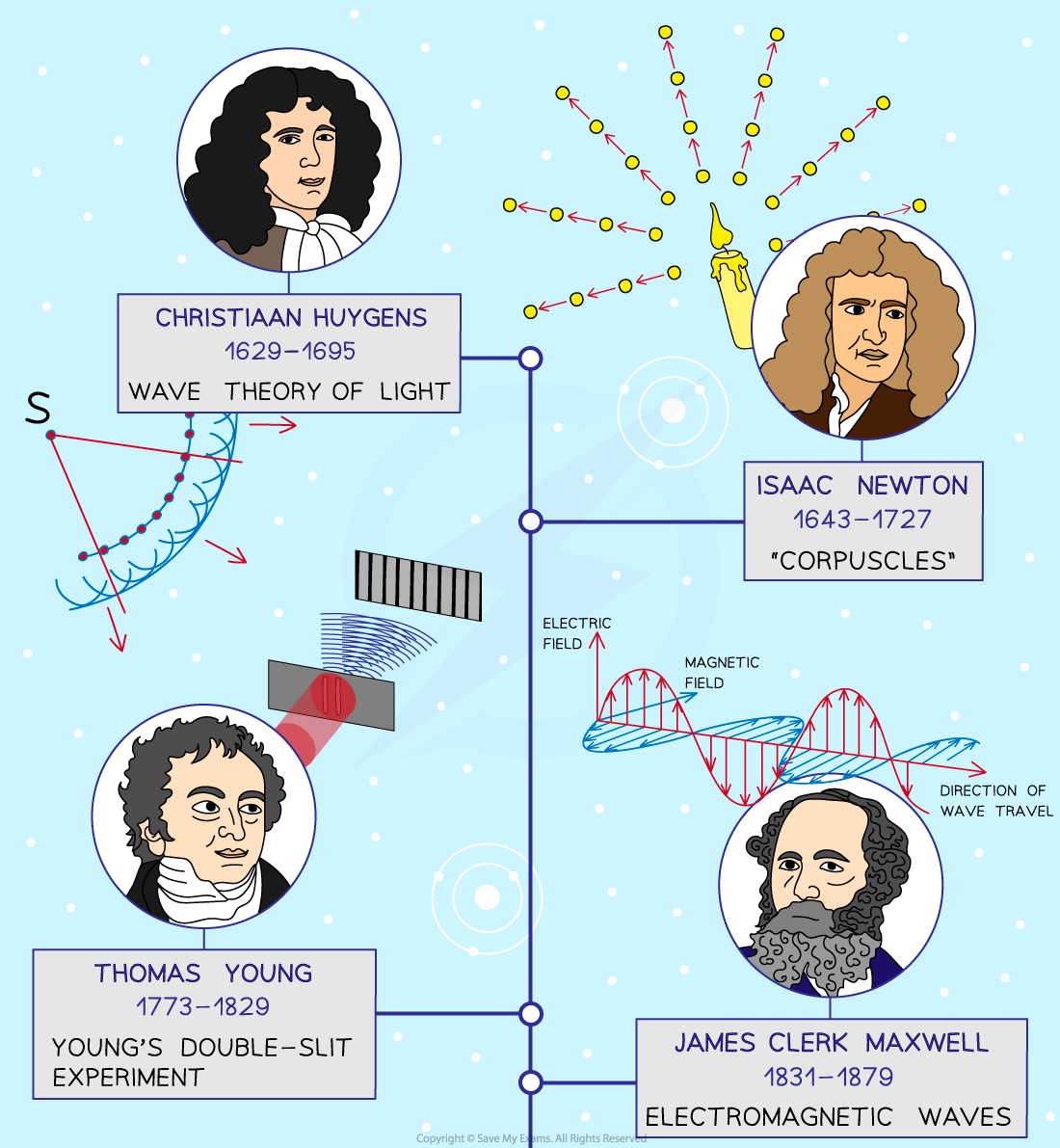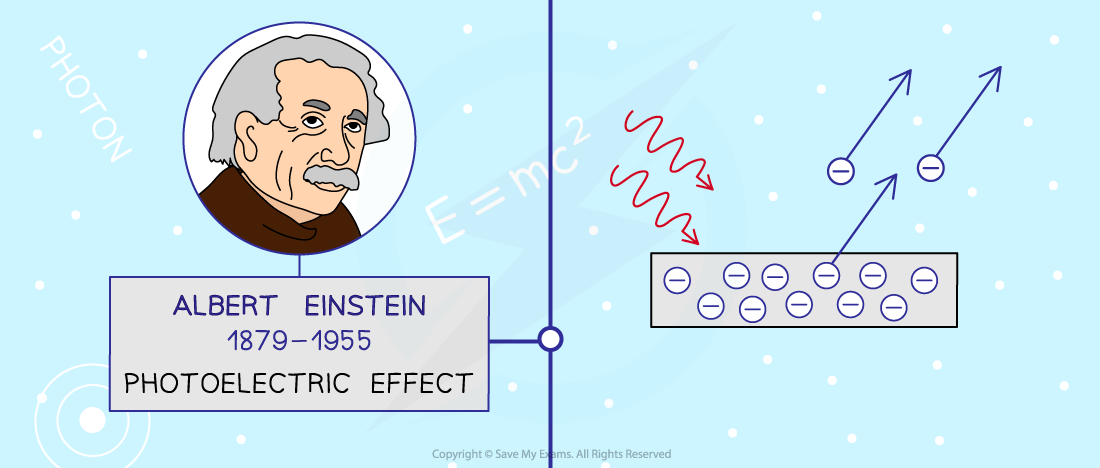- 翰林提供学术活动、国际课程、科研项目一站式留学背景提升服务!
- 400 888 0080
AQA A Level Physics复习笔记3.3.4 Developing Theories of EM Radiation
Developing Theories of EM Radiation
Isaac Newton (1672)
- Newton proposed that visible light is a stream of microscopic particles called corpuscles
- However, these corpuscles could not explain interference or diffraction effects, therefore, the view of light as a wave was adopted instead
Christiaan Huygens (1678)
- Huygens came up with the original Wave Theory of Light to explain the phenomena of diffraction and refraction
- This theory describes light as a series of wavefronts on which every point is a source of waves that spread out and travel at the same speed as the source wave
- These are known as Huygens' wavelets
Thomas Young (1801)
- Young devised the famous double-slit experiment
- This provided experimental proof that light is a wave that can undergo constructive and destructive interference
James Clerk Maxwell (1862)
- Maxwell showed that electric and magnetic fields obeyed the wave equation. This means that light was simply waves made up of electric and magnetic fields travelling perpendicular to one another
- Later, Maxwell and Hertz discovered the full electromagnetic spectrum
Albert Einstein (1905)
- Einstein discovered that light behaves as a particle, as demonstrated by the photoelectric effect
- He described light in terms of packets of energy called photons
- Later the scientific community came to understand that light behaves both like a wave and a particle
- This is known as wave-particle duality


转载自savemyexams

早鸟钜惠!翰林2025暑期班课上线

最新发布
© 2025. All Rights Reserved. 沪ICP备2023009024号-1








